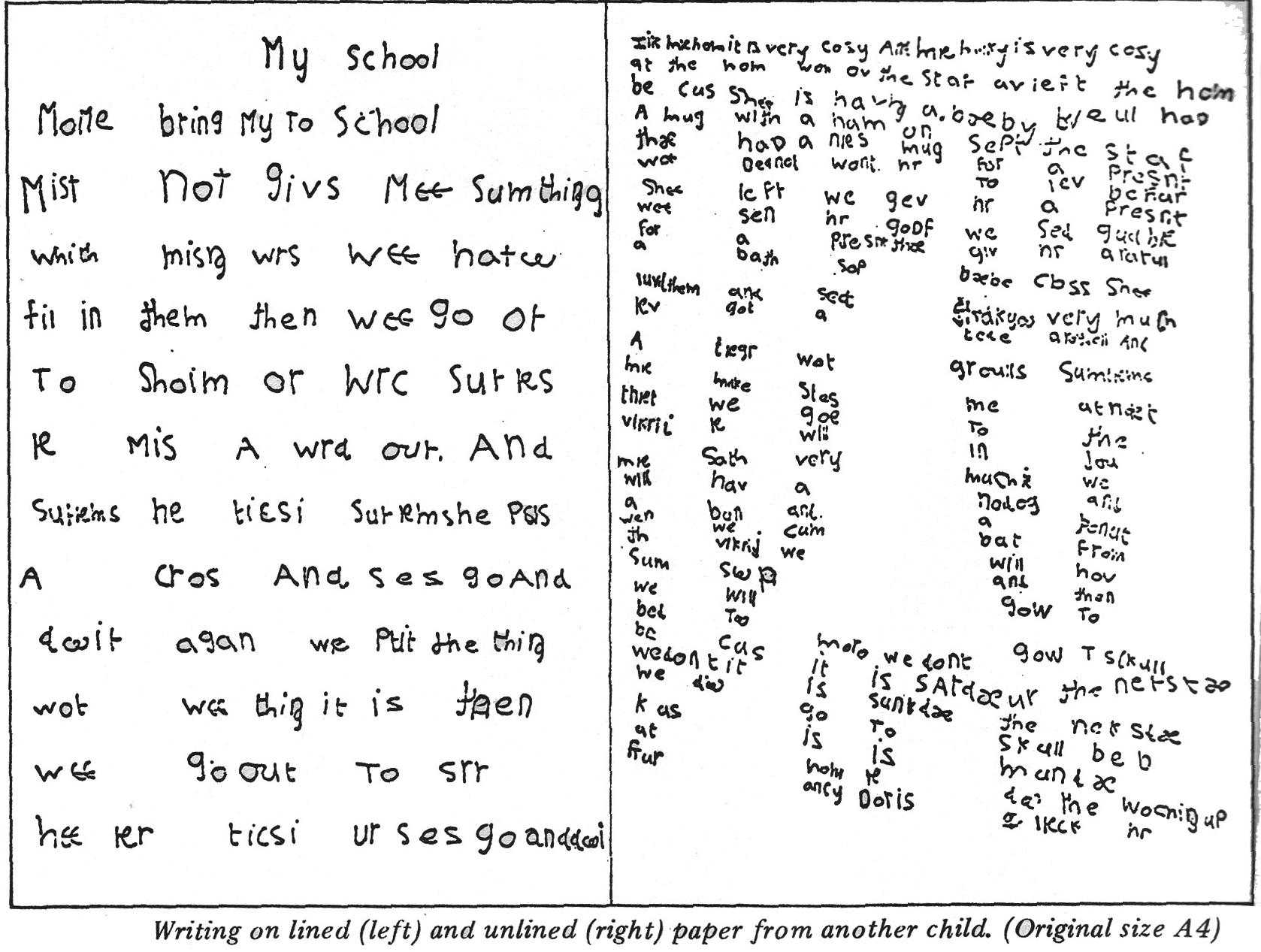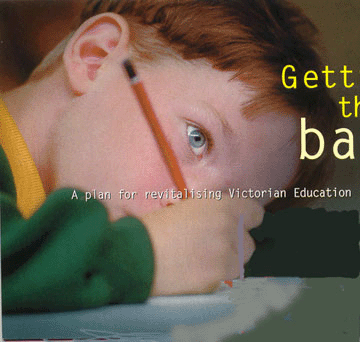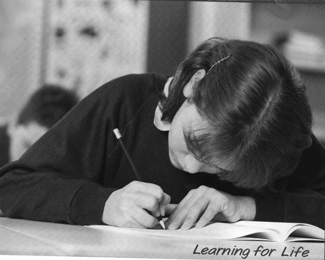There can be barriers to literacy even in the class-roomEducation budgets for literacy are increasingly costly. But some classroom barriers to print literacy could be removed at no cost. Seven barriers to literacy
1. Barriers that increase confusion and spoil desire to learnWhy read? Children from bookless homes may be given no understanding right from the start of why they should bother trying to learn to read. Learners are lost if they are given no way to catch up when they have been absent or change schools or just forget. Individual teaching that misses out. Without classroom teaching or textbooks as well, individual children can miss out on some critical learning, or think they have. Preventing fast-tracking by bright children. When there is no way a bright child can learn to read in the first week of school - as many could, given a chance. Bright children get fed up with the slow dripping over time of the know-how that they should have been given quickly and systematically. Waste of children's efforts. When children do their writing on pieces of paper which then go in the bin, mocking their efforts and leaving no consecutive record of their work to remind them of what they have done and how they are progressing. Squashing curiosity. The greatest reason for children wanting to read is curiosity, 'to find out what happens'. Urging prediction of what will happen in a book to 'make it easier for them to read' may take away curiosity to read it. "What do you think happens?" is fair enough, but the answer must be to read the book, not pre-empt with guesses. Small children sitting inattentive on the floor may not be noticed if they are not disruptive, when they are uncomfortable or can't see or hear without craning. 2. Learning poor reading practices.These will be hard to unlearn, if ever. Barking at print without interest in the story. This can be a problem with 'Phonics'. Inaccurate reading. When guessing is encouraged for any reason, inaccurate readers get the habit of only seeing what they expect to see. This can be a problem with 'Whole Language', and result in adults who learn little from their inaccurate reading. They catch a few words and reconstruct what they think a writer would be saying, and react to that, often emotionally, instead of trying to find out what is actually said. 3. Books that prevent learners becoming avid and skilled readersSales appeal at the cost of reader appeal. Print too small, fonts too fancy. Letters that are easily confused and cause bdpq confusions that will handicap some learners permanently. Print for beginners should be clear, beautiful and interesting. Print obscured by coloured or picture backgrounds slows down good readers, and can be too difficult for those who struggle. White on black is worst. Pictures that tell the story so that reading the print is not needed. Pictures should arouse curiosity to read the text to find out what is happening in them. Line-a-page beginners books with one line of print under a large picture on each page are good for a start. But at the same time children should be starting to learn to read paragraph text and attend to print as interesting in itself. Silly stories make many intelligent children revolt against reading - and so they can become 'bright dyslexics'. 'Thinking' books are needed early as well. Rubbishy little booklets that quickly go in the bin. Once-only books. To tempt children by novelty, beginners are sometimes given silly little books after silly little book, with one line under each picture, which they stumble through once only. Pictures that no child wants to look at more than once. Every picture should invite looking at again. No re-reading of the same books. When beginners get no practice and experience in re-reading and re-reading a favourite book that they like, that they want to re-read.Then they never get the experience of fluent reading, that can concentrate on learning from the content, and they retain stumbling habits. This is especially a problem for children from bookless homes. 4. Extra barriers for disadvantaged children can also be barriers for other learners tooProblems of discipline of disruptive students can prevent a class getting attention or teaching, and burn-out potentially fine young teachers. It is a disgrace if it is thought acceptable that teachers and children should be forced to put up with so much wasted time and unhappiness at the taxpayers' expense. Inadequate teaching of how to care for materials. Scolding is not the answer. Class practice of how to can be made entertaining. Too much trashing of work into the bin is bad psychologically - and expensive. 5. HandwritingSmall children should be allowed to use pencils, pens and brushes that are a comfortable size for their little hands, when they want to, not just big crayons and brushes. Large and long instruments can be difficult to manage skilfully. Children can often see that their paintings are not what they want them to be, and they learn poor handwriting habits. Children should be helped to learn comfortable pencil-holds that develop fast, small, comfortable and legible handwriting. Good posture encourages good handwriting and is desirable for health. Writing without lines as helpful guides can seriously discourage children who cannot write straight without them. It is dismaying to see your writing going all over the page or running down hill, as I well remember. Research, such as Hunter at Keele University, has conclusively proved that 'creativity' is not discouraged by lines as guides (not policemen).
Learning poor handwriting through cramped posture and penhold, and awkward alignment of paper
6. Other unintentional discouragementsBeing constantly questioned. Only the bright children like being asked questions constantly. All small children learn by asking the questions - or they get lost. What seems stupid can make boys particularly rebel. Value of tasks must be clear. When self-help is impossible. When there is no chance for learners to teach themselves. 'Activities' not evaluated for learning value can be time-wasters, away from the real literacy business of learning to read, enjoy and understand books, and to write competently. Children can learn to play games but not what they aimed to teach. When teachers are hassled with too many responsibilities apart from teaching and attention to their children 7. Specific teaching disabilitiesWhen teachers have no expertise or training in public speaking, and the children are bored, restless and uncomprehending. Incompetent teachers CAN be helped to improve the clarity and interestingness of their speech, and how to hold a class without shouting. They should not have to remain incompetent or leave. Remarkably few teachers have ever seen a brilliant teacher teaching, to help them raise their own sights. This could be remedied - even by video and TV - with many brilliant examples of different personal teaching styles. When primary teachers do not understand the English spelling system, and so cannot teach spelling except in lists or word by word. Anything can be done badly. Phonics, Whole Language, whatever. Poor listening to children read. It is an art to listen so that children enjoy the attention - yet this art is not taught and children can hate 'reading out' as a trial - - so that some teachers avoid listening to oral reading in order 'not to stress the children'. Remedial teaching has a bad record for lasting success without first class teachers. Prevention is far better and cheaper than remediation. 'Many literacies' This is popular jargon for being able to use other means of learning, and should not mean cavalier claims that print literacy is not important. Back to Ozideas Home Page |



